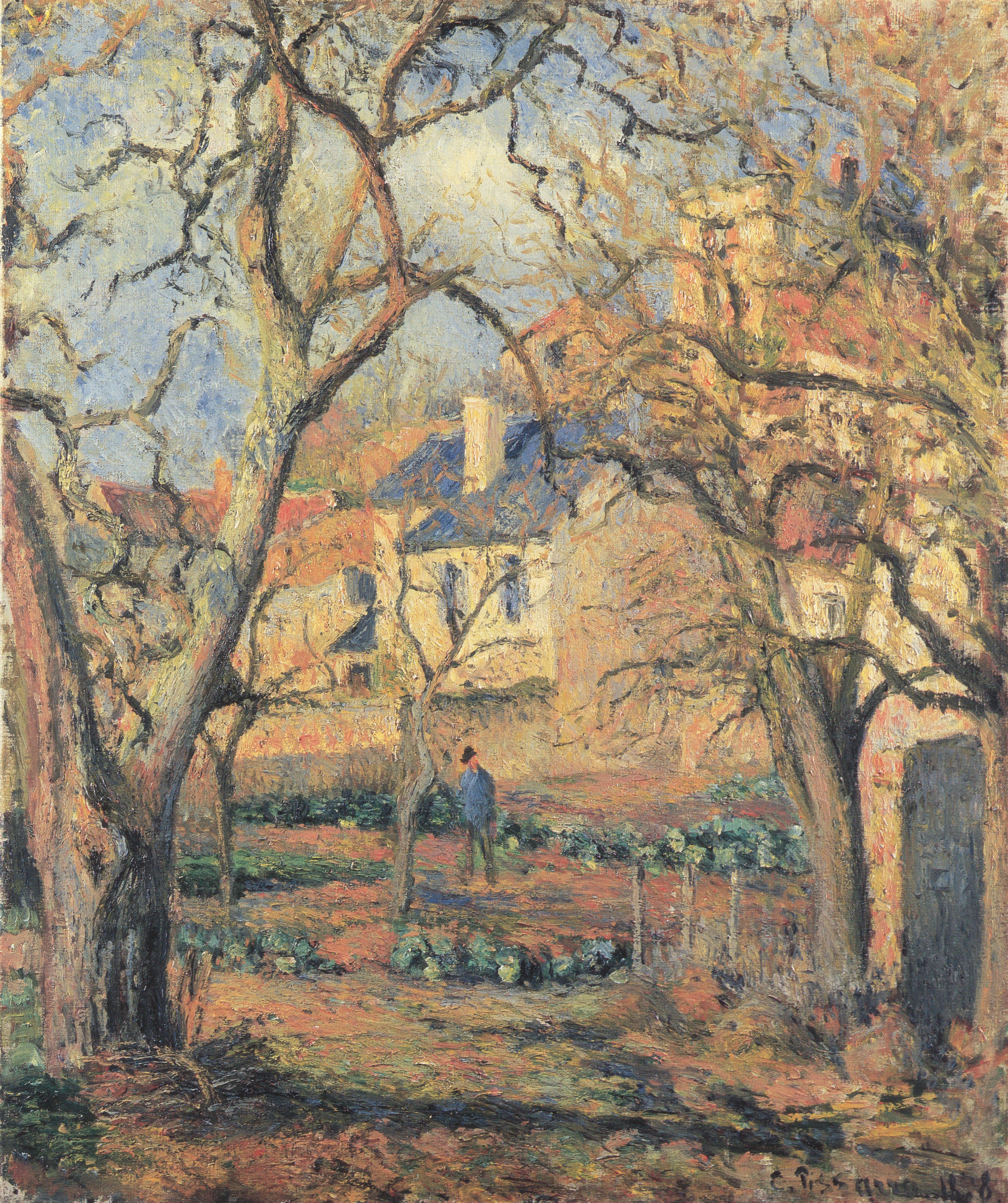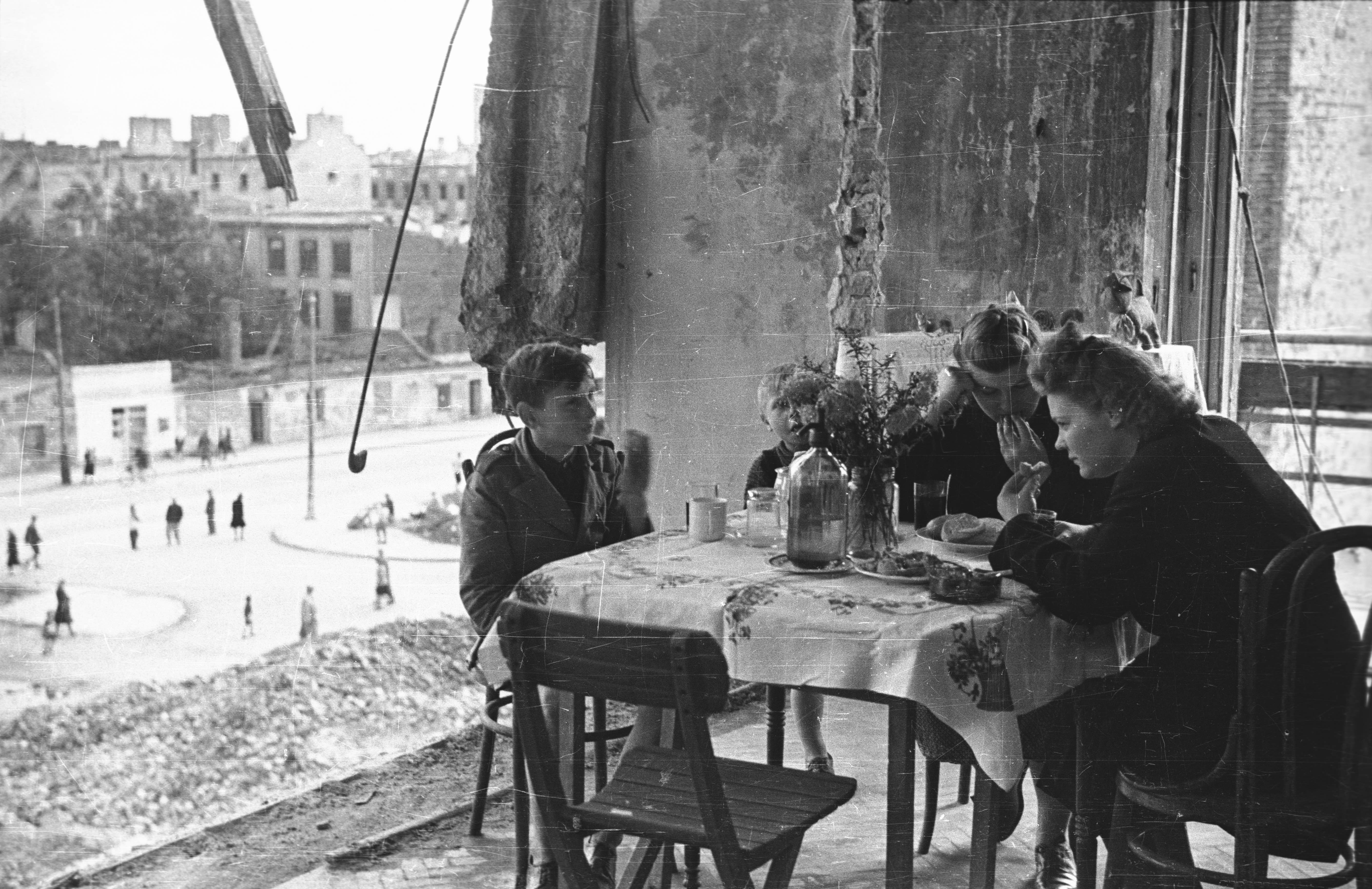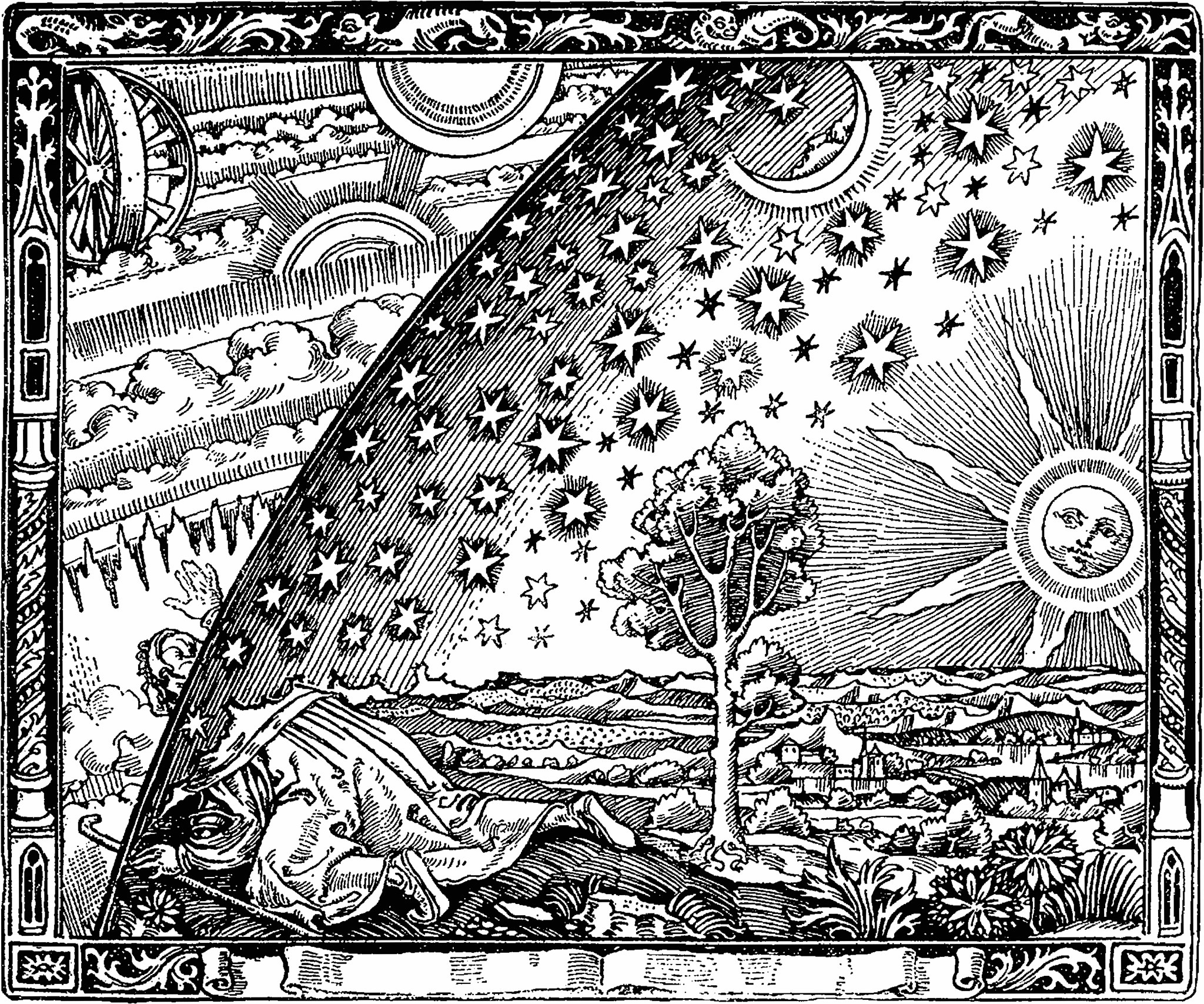
If you are reading this poem on a mobile phone, we recommend rotating the view to horizontal (landscape) orientation.
a canvas contains wrung grey clouds
and the river wrong around tree trunks,
tall and bare to above the waist, crowned
in dull gold and hazel, nothing to lighten
our load, our eyeful. a greener green grows
as a lettuce row, and a tone arises hinting
rose—the hue of the blue, the kissed color
of the stucco hulls of houses up the hill,
the dry grass and bark, brown but slightly
glowing—and a garden opens a canvas
onto a fairytale. a road runs down a river,
lined on the left with trees alive in leaves,
while ancient stone buildings with water
views stream along right to the right, part
of the canvas in shade and part in june
sun flame. a painter provides a season,
a setting, and an oil-thick frame of mind.
—after Monet’s Flood at Argenteuil; Pissarro’s Vegetable
Garden at the Jardin de Maubuisson, Pontoise; and Sisley’s
Saint-Mammès and the Slopes of La Celle—June Morning
Read an introduction to this poem.







